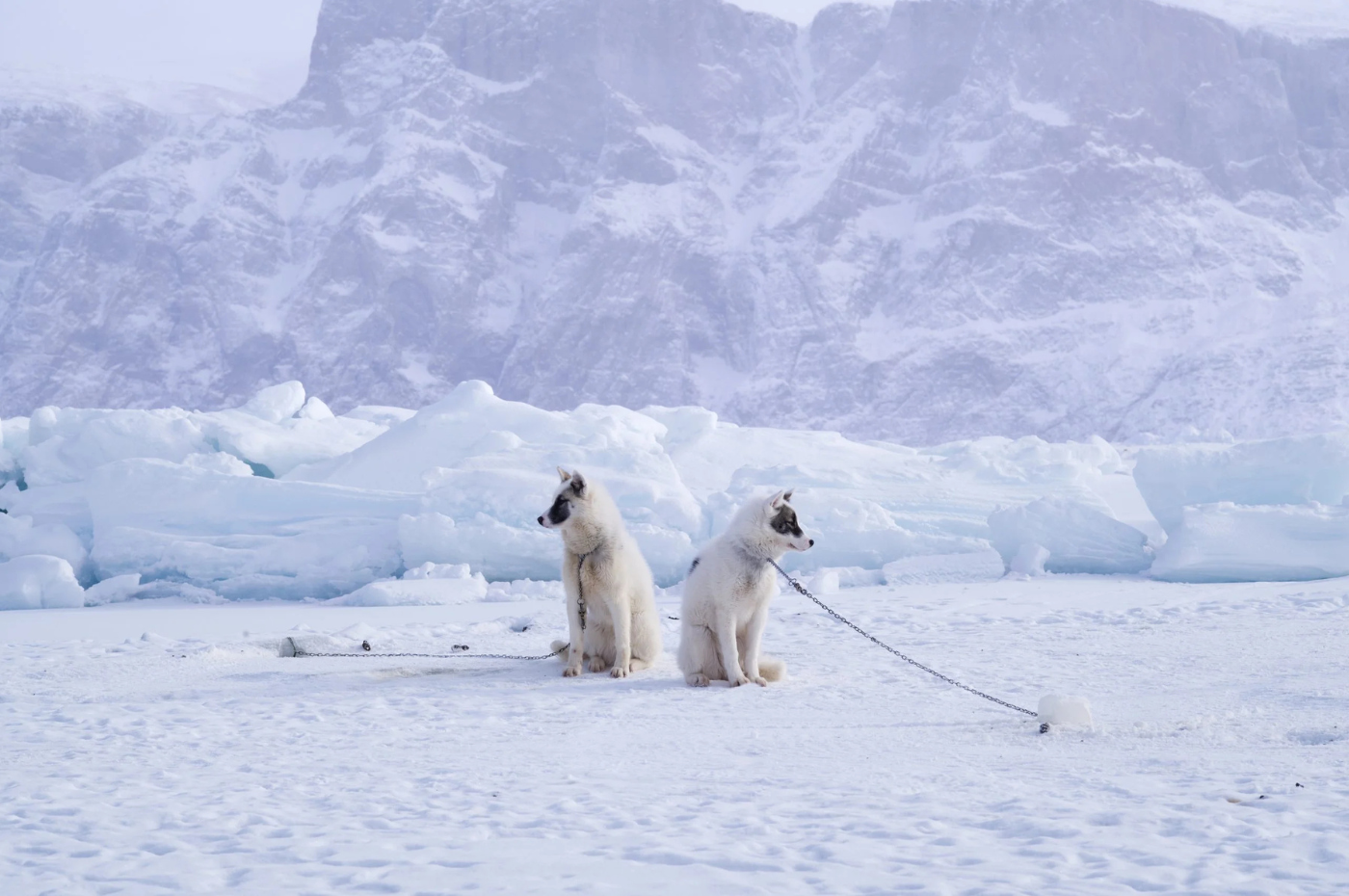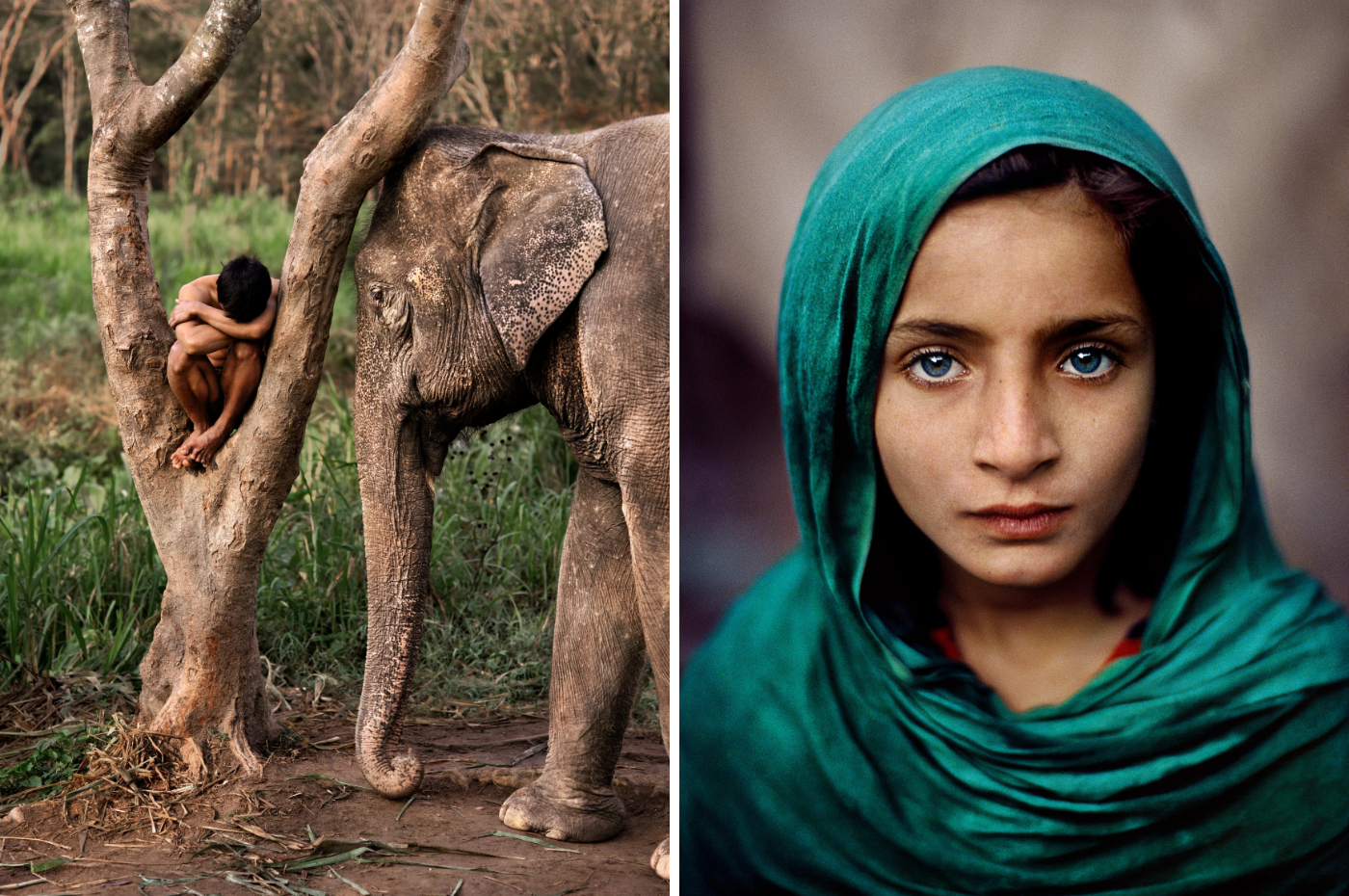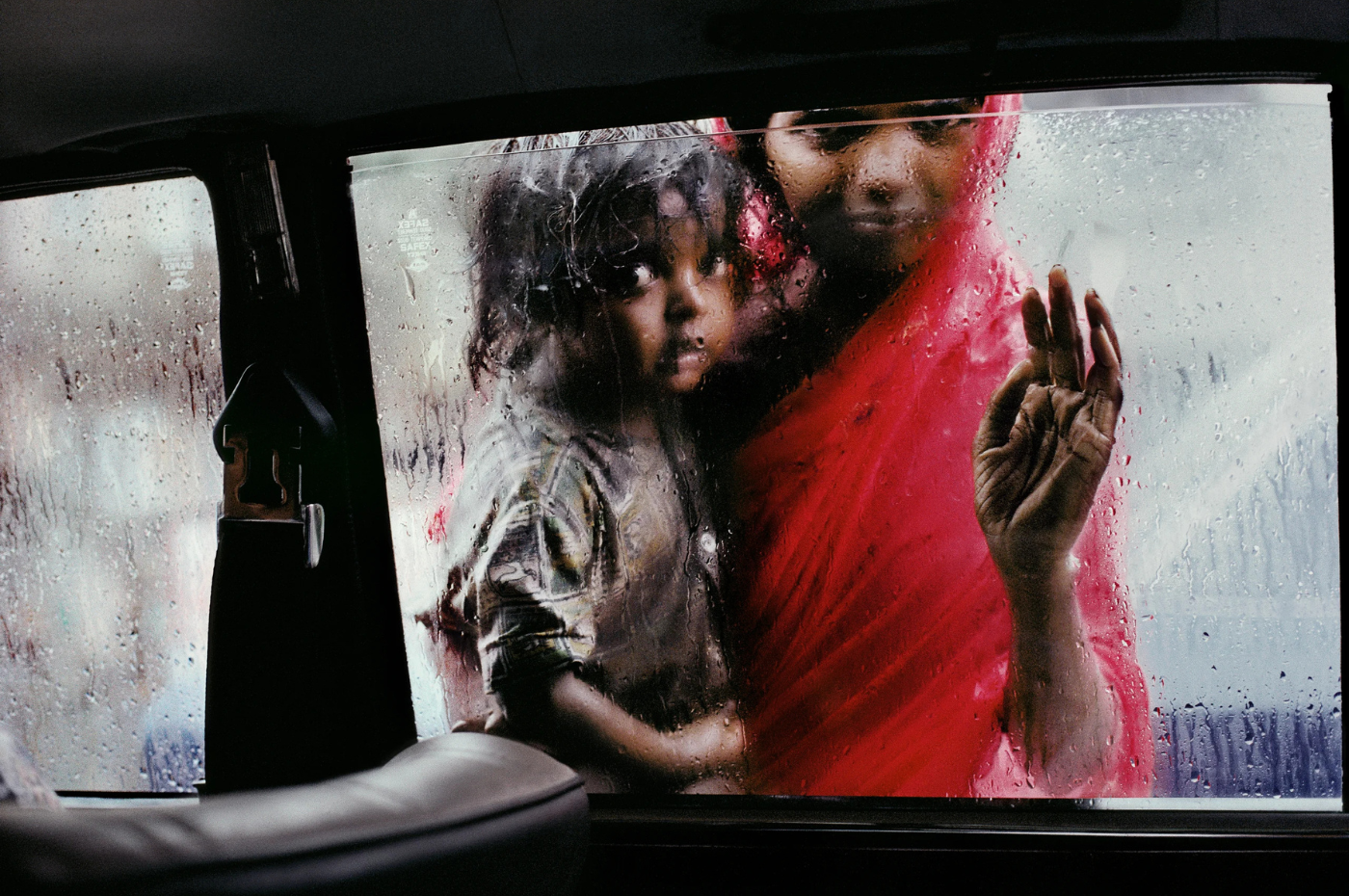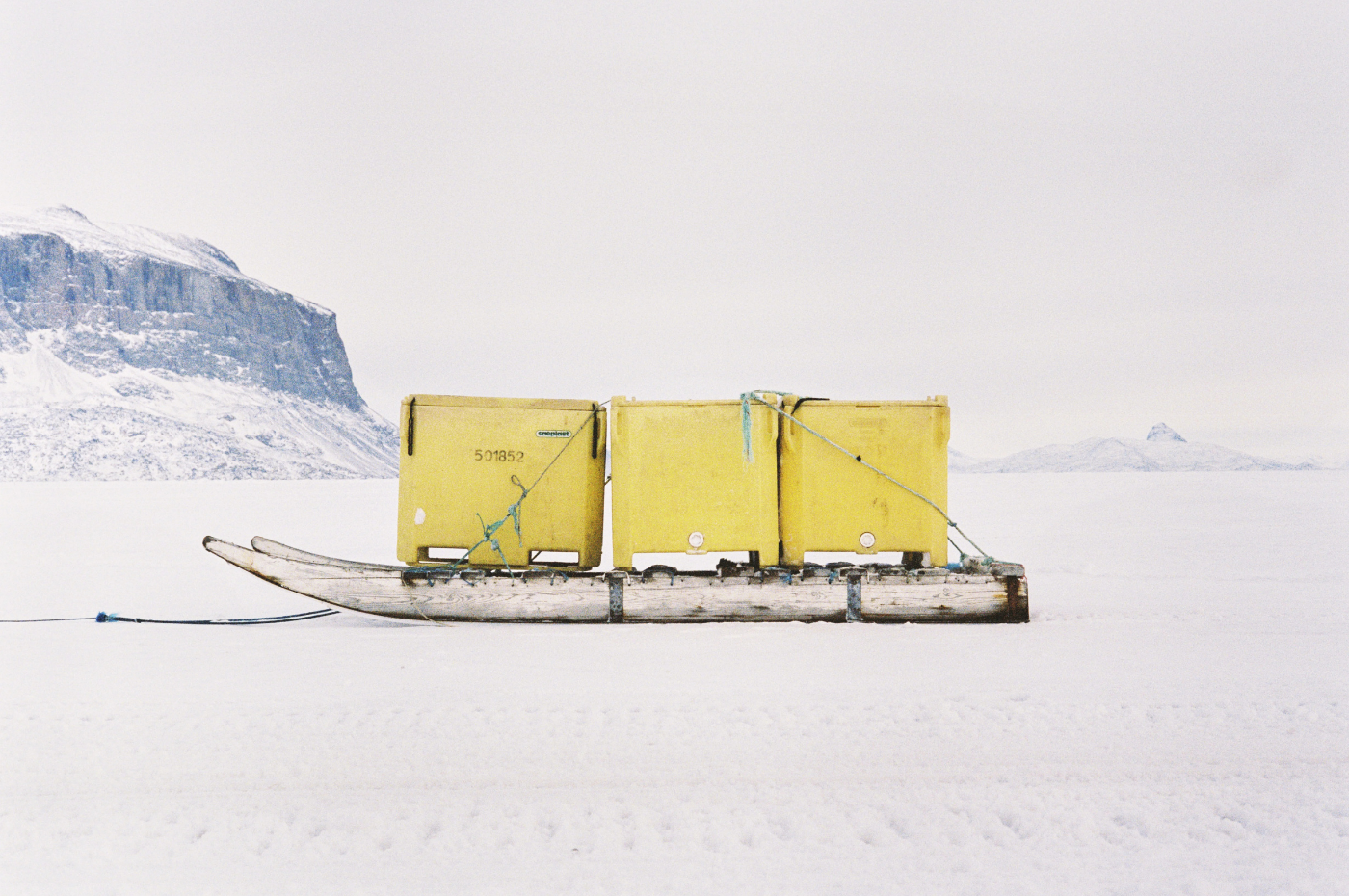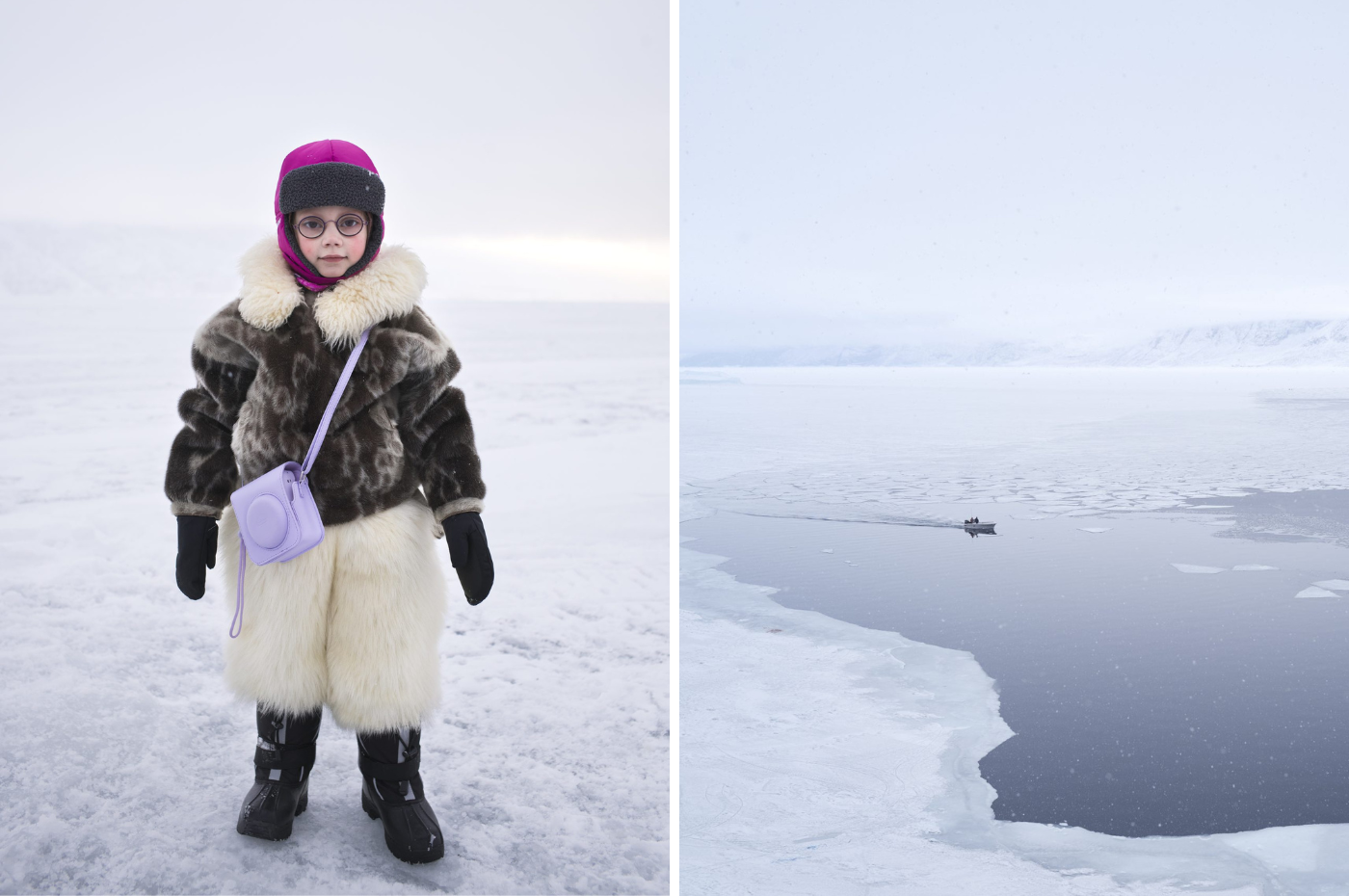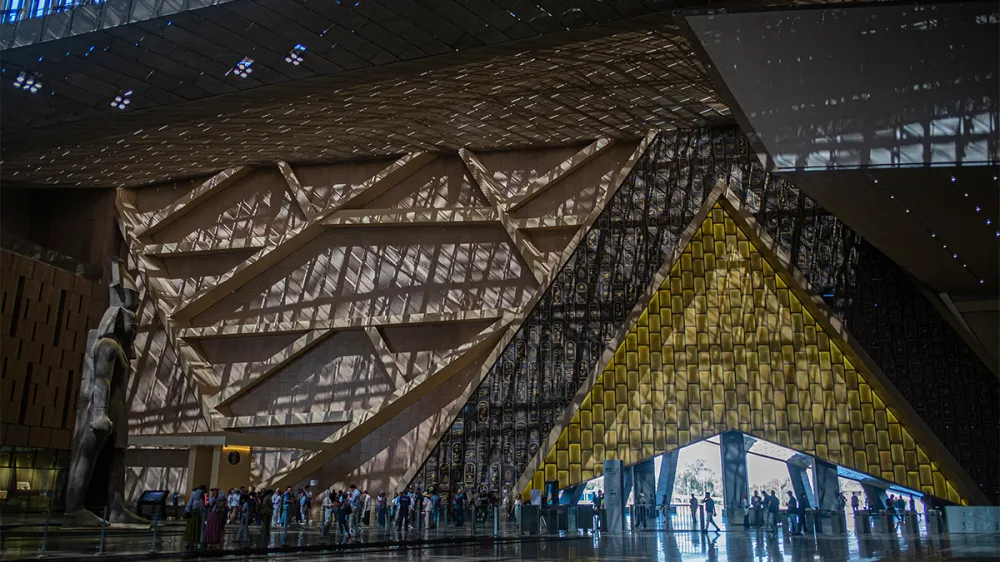Shooting Star: Steve McCurry
The legendary lensman headlines Leica’s 100th anniversary with a free exhibition of iconic works in Sydney.
Related articles
This weekend, Sydney plays host to a rare treat for photography lovers: a free exhibition of work by legendary photojournalist Steve McCurry, presented by Leica Camera as part of its 100th anniversary celebrations.
Best known for his haunting 1984 portrait Afghan Girl, McCurry has spent more than four decades documenting the human condition—from the frontlines of conflict to moments of quiet resilience—in vivid, emotionally charged imagery. His visit to Australia coincides with a series of Leica exhibitions and events in both Sydney and Melbourne, honouring photography’s enduring role in shaping how we see the world.
Ahead of the Sydney opening, we caught up with McCurry for a wide-ranging conversation on storytelling, Leica’s legacy, and the moments behind some of his most powerful images.
You began as a theatre arts major—how did your approach to performance inform your photographic storytelling?
In college, I studied cinematography but was required to take a few theatre courses. I took a few classes on set lighting and design, which have helped me throughout my photography career. Composition and lighting are techniques that have been extremely valuable over the years.
I came to photography through filmmaking. While I was studying film, I started working for the school newspaper as a photographer doing assignment work, and I really started to love taking pictures. I became enamoured with the still image and eventually decided that this was what I wanted to do, not be a filmmaker but a photographer.
Afghan Girl remains iconic. What initially drew you to her image—and how do you feel about its legacy today?
What initially drew me to her was the intensity in her eyes and the way she looked straight through the lens. In that refugee camp in Pakistan, I had taken hundreds of portraits, but there was something in her gaze that stopped me. It wasn’t just fear or hardship; it was resilience, strength. I didn’t know her name then; very few did. She was one of thousands displaced by conflict, and my hope was simply to tell a small part of that story through her face.
As for its legacy, that can be complicated. The image has certainly become well-known, and I’m grateful that it brought attention to the plight of Afghan refugees.
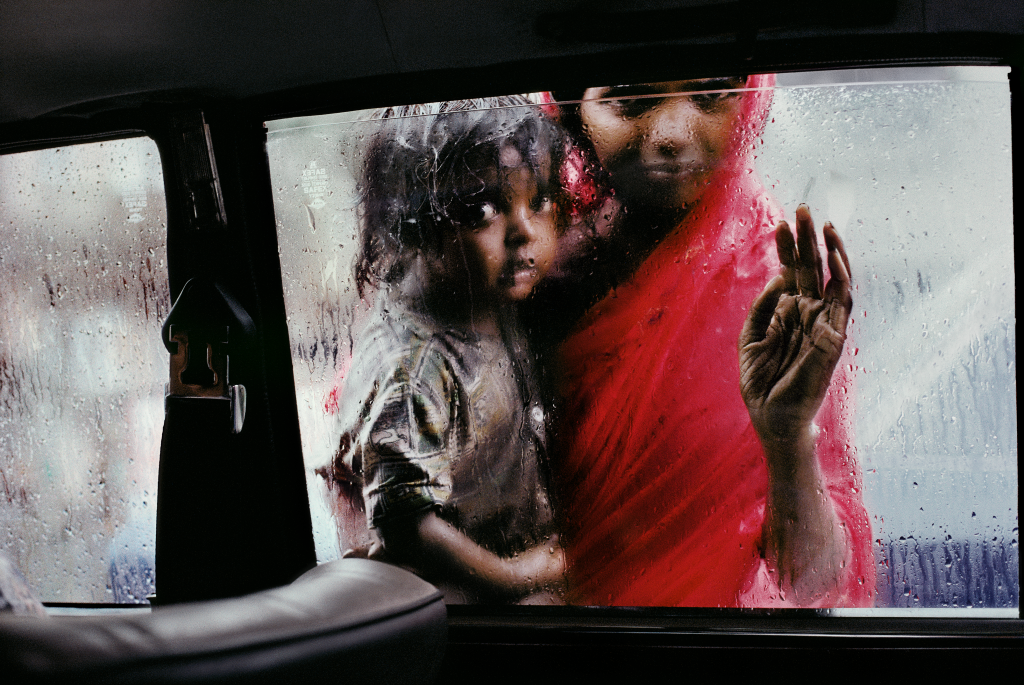
Your work spans war zones to serene cultural moments. How do you decide which stories deserve your lens?
When I decide which stories to pursue, I follow a very instinctive, emotional compass. I’m drawn to places and people that tell stories through their eyes, their environments, their struggles, and their joys. It’s less about deciding what deserves my lens and more about listening.
Whether it’s the chaos of conflict or the serenity of everyday life, I look for the human element and the universal thread that connects us all. A war zone may reveal resilience, while a quiet village moment may reflect grace or dignity. If a scene evokes a deep emotion in me, I trust it will speak to others as well.
Ultimately, I try to honour the people I photograph by capturing a piece of their truth. My job is to witness, not to impose. The story is already there, and my role is simply to give it light.
Looking back on your travels over four decades—how has your perception of the world changed?
Over the past four decades, travelling through so many corners of the world, my perception has become both more complex and more compassionate. When I first started out, I was hungry to see everything and to witness the dramatic, the extraordinary. But with time, I began to realise that the most powerful stories often live in the quiet, everyday moments: a glance, a gesture, a shared meal.
What’s stayed with me most is how much more alike we are than different. Despite language, culture, or geography, people everywhere want the same fundamental things, like safety, dignity, love, and purpose. I’ve met people in the midst of war and displacement who show more kindness and generosity than I could have imagined. It humbles you.
The world can be both brutal and beautiful, often at the same time. My experiences have taught me to approach it with curiosity, respect, and patience. I think, more than anything, I’ve learned to slow down and truly see people and not just photograph them.
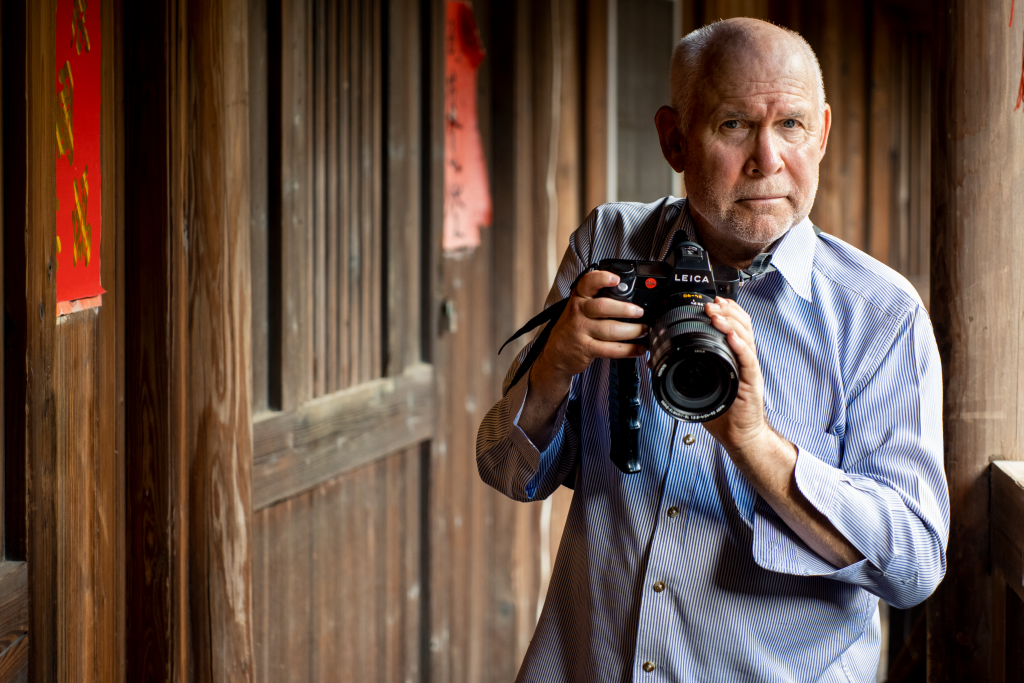
You famously switched from Kodachrome film to digital—how would you compare those mediums in terms of emotional impact?
Kodachrome was a beautiful film. It had this richness and depth that gave colours a kind of poetic quality, especially in the reds and greens. I used it for decades, and many of my most well-known images were made with it. There was something special about the process, too. You had to wait to see the results, which created a kind of patience and discipline.
Switching to digital was a big change, but it opened up new possibilities. The flexibility, the immediacy, the ability to work in low light all of that has been incredibly valuable. What matters most though, is not the medium but the story and the emotion in the picture. Whether it is film or digital, the goal is the same: to connect with people and capture something honest.
What is the significance of pairing your work with emerging Australian photographer Jessie Brinkman Evans in the “In Conversation” exhibition?
The exhibition is a meaningful dialogue between two perspectives. Mine, shaped by decades of photographing humanity across the globe, and Jessie Brinkman Evans’, a fresh, poetic voice exploring identity, landscape, and culture.
Our pairing isn’t about contrast; it’s more about connection. Jessie’s work brings a quiet intensity and sensitivity to place, especially in remote regions like Greenland. My work often focuses on conflict and resilience. Together, our images reflect how photography transcends generations and geography, revealing the enduring power of the human experience.
This exhibition shows that storytelling through images is a shared language that is timeless, evolving, and deeply human.
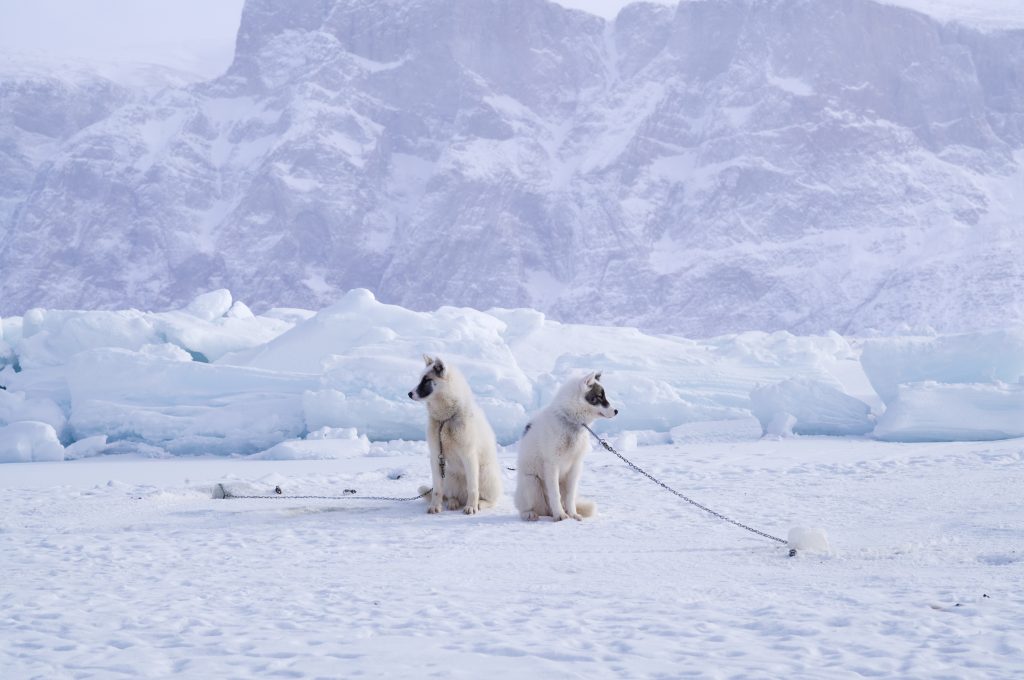
Looking at today’s global changes—climate, migration, technology—what themes continue to inspire your photography?
What continues to inspire me, even amid all the global changes like climate shifts, mass migration, and rapid technology, is the resilience of the human spirit. That has always been the central thread in my work. No matter how much the world transforms, people adapt, endure, and find ways to hold on to their identity, their culture, and their sense of place.
Climate and conflict are pushing people from their homes at unprecedented rates, and that displacement creates stories of survival, loss, and hope. I’m drawn to those stories, not for their tragedy alone, but for the quiet strength people show in the face of it.
At the same time, I’m deeply moved by the beauty that still exists and rituals that have remained untouched for generations, landscapes that whisper ancient history, and faces that carry wisdom. Technology is changing how we connect, but the need to be seen and understood is timeless. That’s where photography still holds so much power.
While in Sydney and Melbourne, are there local stories or subjects you hope to explore further?
I’m particularly interested in exploring the stories that speak to Australia’s deep cultural layers. I’m drawn to everyday moments like street life neighbourhoods, and faces in the crowd. Australia is incredibly diverse, and I’d love to capture how multiculturalism expresses itself in daily life, from festivals and markets to quieter, more intimate interactions.
Vernissage: 6 pm Thursday August 7, 2025 (by invitation)
Exhibition Duration: August 8, 2025 – October 31, 2025
Opening Hours: Monday – Wednesday 10 am – 6 pm, Thursday 10 am – 9 pm, Friday 10 am – 6 pm, Saturday 10 am – 6 pm, Sunday 11 am – 5 pm
Subscribe to the Newsletter
Recommended for you
Egypt’s $1.5 Billion Archeological Museum Will Finally Open
The Grand Egyptian Museum will house some 100,000 artifacts.
By Nicole Hoey
August 12, 2025
Hope and Glory: Otis Hope Carey
One of the most feted names in First Nations art, is supercharging his profile with a new Christian Louboutin collab.
By Brad Nash
June 27, 2025
You may also like.
You may also like.
Ralph Lauren’s Oak Bluffs Collection Is a Masterclass in Classic Summer Style
The capsule honours the heritage of the Martha’s Vineyard community, which has been a haven for generations of Black families.
Building on his partnerships with Morehouse and Spelman colleges, Ralph Lauren now takes us off campus to Oak Bluffs for summer break. A haven for Black communities on Martha’s Vineyard for more than a century, Oak Bluffs’s generations of style and tradition come together in a collection of menswear and womenswear that marries elements of classic collegiate style with coastal leisurewear. “This collection is about more than a charming coastal town; it’s a story of the American dream,” said Ralph Lauren, who called on alumni of the two schools working at Ralph Lauren to conceptualise and design.

As with any story, visuals are key. Lauren enlisted author, director, and producer Cole Brown, who has summered on Martha’s Vineyard for decades, to bring the stories of Oak Bluffs to life. The campaign, which was lensed by photographer Nadine Ijewere and videographer Azariah Bjørvi, both of whom worked on the award-winning Polo Ralph Lauren campaign with Morehouse and Spelman Colleges in 2022. The partnership paid off, with transportive imagery that reads more like a family album than an ad campaign. Anchoring it all is a short documentary that mines archival footage and features the stories of business owners, multi-generational homeowners, and other locals along with Morehouse and Spelman alumni.

“Every piece in this collection tells a story, from quilted souvenir jackets to collegiate crewnecks and cardigans. We’ve captured the spirit of this town—its leisurely summer bike rides, its five-to-seven front porch socials, its nautical traditions—and transformed that into designs that feel as special as the place itself,” David Lauren, the brand’s chief branding and innovation officer, tells Robb Report. The Polo Ralph Lauren for Oak Bluffs collection will be available on RalphLauren.com, the Ralph Lauren app, select Ralph Laure stores, and Morehouse and Spelman College bookstores.

About those front porches: To encourage another century of idyllic, cedar-shingled summers, Ralph Lauren has also partnered with the Cottagers, Inc., a nonprofit of 100 Black female homeowners on Martha’s Vineyard focused on architectural and cultural preservation. The brand is also continuing its partnership with the United Negro College Fund, supporting HBCU scholarships and fostering early talent development and recruitment opportunities.
View the full-length documentary, A Portrait of the American Dream: Oak Bluffs, on YouTube. A special screening and panel discussion will also take place on August 8, 2025 at the Martha’s Vineyard African American Film Festival.
You may also like.
Home is Where the Art Is
Six standout Australian galleries to know now.
Australia’s gallery scene is booming. More galleries than ever before are going on the road to participate in art fairs in scene that is rapidly maturing. Meet the passionate local owners from around Australia who are energising the creative milieu with the abstract, the edgy, the Indigenous and the generally astounding.
Hugo Michell Gallery

The district may not roll off the artistic tongue like Paris’s Montmartre or London’s Shoreditch, and yet the prim hedges of Adelaide’s Beulah Park suburb provide cover to a stealth powerhouse of the Australian contemporary art movement, tucked away in a charming, blink-and-you’ll-miss-it converted Victorian workers’ cottage. Since 2008, the Hugo Michell Gallery has unflappably carried the torch for established and emerging acts with equal fidelity, across a broad sweep of mediums from photography to printmaking, textile to ceramic. “We try not to get caught up in the hype and handle each artist we represent with the nuance required for promoting their work,” says Michell, currently counting 28 artists on his books. One notable on this year’s busy docket is Melbourne-based Richard Lewer, a social realist—already snapped up by the National Galleries of Australia and Victoria, no less—who for a month from April 10th will probe the uneasy relationship between crime, sport and religion. While comfortable in the skin of his homely suburban bolthole, Michell is not averse to braving the rigours of the Australian art fair circuit (“They’re a bit of a circus, but who doesn’t love a circus?) and often undertakes house visits to acquaint himself with the whims of new customers. “One of the things that gives me the most joy is building a collection for a client,” he says. “We have worked with for 16 years, tailoring and sourcing works for them.” More proof that you don’t need a headline location to generate the biggest stories.
hugomichellgallery.com
Cassandra Bird Gallery

The art sphere often challenges the myth that married partners should not become gallerists—see Iwan and Manuela Wirth of Hauser & Wirth fame, among other examples. And so it is that Cassandra Bird and husband Fabian Jentsch are rapidly cementing a reputation as one the Australian art scene’s supercouples with their 2023-acquired Potts Point space, an expansive four-level heritage terrace fizzing with congeniality, making visitors feel like they have popped to a friend’s (expertly curated) home for elevenses. Which is no great shock: the property doubles as the duo’s own home. Bird brings a wealth of experience, and a hefty contacts book, thanks to long, respected stints in the Big Apple and Berlin, and nine years at Sydney’s RoslynOxley9 Gallery; Jentsch, meanwhile, is an experienced artist, exhibition maker and set designer. “We try to enthuse people, get them excited as we are about those we work with,” says Bird. Meander across the property’s wooden floorboards—perhaps diverting for a chat in the communal courtyard that doubles as a social hub and ideas-exchange forum—and you will enter the realm of Perth-born graphic painter Jedda Daisy-Culley, who has a hallway and wall dedicated to her work; venture upstairs and deep dive into locally based experimental photographer Laura Moore; head into the basement and peruse the collective works the Tennant Creek Brio, out of Warumungu Country in the Northern Territory. All 24 of the gallery’s artists unite under the theme of timelessness. “We are into investigating quality and showing transformational and breakout work from artists,” says Jentsch. “The work we choose must have something that is strong value for us.” Here’s to the sanctity of marriage.
D’lan Contemporary

It speaks volumes for the international reach of Indigenous art that D’lan Contemporary opened an outpost in New York long before expanding the gallery beyond its Melbourne roots to set up shop in Sydney. Then again, founder and director D’lan Davidson is not afraid of expanding his frontiers as a means of hawking Australia’s most vital cultural outpourings; in 2016, he left the Sotheby’s Australia auction house, where he was ensconced as head of aboriginal art, to launch D’lan Contemporary as the go-to gallery for secondary market First Nations art; and he recently travelled to Maastricht in the Netherlands for the prestigious European Fine Arts Foundation Art Fair, promoting a series of Western Arnhem bark paintings and works by Paddy Bedford, Emily Kame Kngwarreye, Rover Thomas and other. Closer to home, Davidson has surrounded himself with a team brimming with the requisite Indigenous art smarts, including chief curator and gallery director Luke Scholes. From May 8th-July 4th, the Significant exhibition, a mainstay of the Melbourne gallery for the past ten years, will show across all three of D’lan Contemporary’s locations. “Our exhibitions and all our advocacy work seek to further support and develop the burgeoning global interest in Australian First Nations art and artists,” says Scholes. As if further proof were needed of its commitment, the gallery donates 30 percent of its profit back to artists and their communities. Bravo.
N.Smith Gallery

Enter Nick Smith’s compact office and you notice how the walls are studded by the artworks of those he represents; this is a man, you feel, who has a more intimate connection to his stable than the average gallery chief—an instinct confirmed upon discovering that he has invested his entire life savings into the Surry Hills space. When we meet, Smith’s whiteboard is teeming with collaborative projects, hinting heavily at the kind of edgy, thought-provoking artists that his outfit—comprised of five full-time staff—is renowned for nurturing. “It’s constant, but amazing,” says Smith in his typically reserved manner, more studious scientist than reengage gallerist. “I wanted to contribute to culture in my own way.” The gallery’s current ascension allays any empathetic fears of impending financial doom. This past February, Smith—who cut his teeth at Philip Bacon Galleries in Brisbane and Sydney’s Sullivan+Strumpf—collaborated with the Australian High Commission in India to represent Darrell Sibosado at India Art Fair ’25, and throughout the year will be partnering with the Sydney chapter of Soho House to host a series of private viewings and artist studio visits. Even so, he now splits his time equally between private and public projects, often mentoring artists at all stages of their creative journeys. “It’s that forward momentum. It’s that feeling of progressions and going somewhere that I love,” says Smith. Indeed, the only way is up.

Palas
It is hard—nay, almost impossible—to imagine Palas founders Tania Doropoulos and Matt Glenn frantically trying to scoop up whoever is flavour of the month on Sydney’s perennially shifting art circuit. Here are young gallery partners prone to a slower, more considered approach, instead recruiting a tight roster of internationally famed artists, and choosing to nurture relationships that have been years, sometime decades, in the making. Case in point: video performance maestro Shaun Gladwell, who represented Australia at the 2007 Venice Biennale (a 20-year affiliate), and Melbourne-based artist and noise-musician Marco Fusinato (15 years), who also flew the artistic green and gold at the same festival in 2022. Add to that list Canadian multi-media artist Tamara Henderson and Irish sculptor Eva Rothschild, currently working out of London, and it is clear Palas have a formidable roll call to lean on. “We’re investing a huge amount of time into their processes as art makers,” says Doropoulos. “And I think by extension, we’ve got really good working relationships with other galleries throughout the world.” For its founders, the Palas gallery—which opened in Sydney’s resolutely hipster Waterloo suburb just over a year ago with a silkscreen painting medley by the aforementioned Fusinato—is somewhat of a flag-planting endeavour on home soil: both earned a certain amount of their stripes overseas—Doropoulos as former artistic director of Frieze London and Frieze Studios, and Glenn at Sadie Coles HQ, also in the British capital. Australian art disciples will no doubt be praying for a long domestic residency.
Coma

If Sotiris Sotiriou’s consciously balanced ensemble of black Saint Laurent suit, single gold chain and flash of bare chest are anything to go by, the Coma gallery founder wields a sharp eye—a handy attribute to have when your career depends on identifying aesthetic clout, what hits and what doesn’t. From humble beginnings in 2016 in a subterranean road space next to Elvis Pizza on Sydney’s New South Head Road, his enterprise gradually flowered, first to East Sydney, then Chippendale, before fully blooming at his current space in up-and-coming Marrickville, in what was once a coffee factory. The predominantly light-industrial area has witnessed around half a dozen new gallery debuts in recent years, and Coma’s door-fling, filled as it was with hip young Inner West couples sourcing bold, ambitious art for their homes and offices, suggests Sotiriou has timed his arrival to perfection. February’s opening exhibition was hosted by Australian (but Santa Fe based) figurative painter Justin Williams, whose approach riffs on the folkloric traditions of Russian and Polish art, rich with symbolism and psychological details; this work forms a striking counterpoint to the abstract expressionism of other Sotiriou recruits, such as Zara June Williams and her partner Jack Lanagan Dunbar. The Coma head honcho, who had a spell selling to wealthy clients at Nanda Hobbs, says that private clients now make up most of his customer base. This year, as he prepares to attend three international art fairs, he estimates his artistic head count to increase by 30 percent. He can, no doubt, also point you in the direction of a fine tailor.
You may also like.
Car of the Year
Always an unmissable highlight of the automotive calendar, Robb Report ANZ’s annual motoring awards set a new benchmark among glorious Gold Coast tarmac.
Over two unforgettable days, our motoring sages and VIP guests embarked on an exhilarating journey from Surfers Paradise to Brisbane and back again—traversing an irresistible selection of terrain in our exotic rides, from deserted rainforest-lined b-roads to testing mountain switchbacks with dizzying—sometimes heart-in-mouth—views over the southern Queensland peninsula. And as befitting an event starring the crème de la crème of auto marques, we did so while savouring the best in luxury and gastronomy—capped off with an extraordinary superyacht experience at Sanctuary Cove.

The ten contenders for the Car of the Year were not the only dream machines on show. The first day’s adventure kicked off at the Langham Hotel and included a midday pit stop at the glorious Beechmont Estate, where our fleet of drivers were greeted by a stunning array of vintage cars exhibited in a concours d’elegance-style display.

The sumptuous feast for the eyes on offer at Beechmont, a quaint country village located between the Lamington Plateau and Tamborine Mountain, was followed by a meal for the ages prepared by executive chefs Chris and Alex Norman at the property’s hatted restaurant, The Paddock.

Then, itching to remount our steeds, it was time to hit the road again, with our drivers—all sporting Onitsuka Tiger’s new driving shoes—hightailing it to Brisbane and The Calile Hotel, a property which has been scooping accolades like Jay Leno collects supercars.

After some much needed relaxation by the pool, that evening the drivers and press were joined by local luminaries in the hotel’s private dining room. Over an extravagant banquet they got to compare notes on marvels of engineering and design that they’d had the chance to pilot all day. They were also treated to a showcase of spectacular Jacob & Co. timepieces and Hardy Brothers jewellery and an elegant sufficiency of 40-year Glenfiddich whiskey served in gold cups worth $60,000 a pop. It made for animated discussions and more than a little impromptu shopping.

And did we mention the luxury yacht experience? After a full itinerary of adventures on the road, the day ended with an invigorating late-afternoon of luxuriating aboard two new Riviera Yacht releases—the 6800 Sport Yacht and the 585 SUV—where our intrepid drivers and assorted press got to literally and figuratively take their hands off the wheel and make a case for their car of the year. As the forthcoming pages attest, they were more than spoiled for choice. But who would take centre stage on the winners’ podium?
OVERALL WINNER
BEST SPORTS CAR
BEST LUXURY HYBRID
BEST PERFORMANCE SUPERCAR
BEST ROADSTER
BEST CAR DESIGN
BEST ELECTRIC PERFORMANCE CAR
BEST SUV
Cruise along to robbreport.com.au/events for more supercars and luxury motoring.




You may also like.
21/08/2025
Cool as Ice
Mercedes-Benz’s CEO Ola Källenius is expert at racing a nearly four-tonne truck across a frozen lake. Can he steer the marque’s EV-focused future as adeptly?
Ola Källenius is standing in a cold, bare workshop just south of the Arctic Circle in his native Sweden. A heavily disguised prototype of the new electric G-Class SUV—not yet launched when we meet—has just returned from high-speed, low-grip testing on tracks cut into the frozen lakes nearby and is being hoisted into the air on a hydraulic lift for inspection. As it drips meltwater onto the concrete floor, Källenius, CEO of the Mercedes-Benz Group, eats his lunch (today, a premade sandwich and a carton of juice) and speaks in fluent German to the mostly Austrian engineers who spend months in this bleak locale ensuring that the company’s new models can cope with the types of conditions in which vanishingly few customers will ever actually drive. They discuss the truck’s handling on ice and the progress of its test program. Källenius compliments them on the car’s dynamics—how stable it remained even at speed, how safe he felt driving it—and asks them how long they’re here.
“There are some harsh realities to this job, and to the car industry,” he tells me later. “But this is what I love doing: spending time with our designers, or driving with you on an ice-lake in Sweden, or talking to these engineers. I wanted to congratulate them on what they’ve achieved. We get to enjoy a nice couple of days here, but they’re here for a long time.”
At 193 cm, Källenius might tower over most of them physically, but there’s nothing in his demeanor that hints at the disparity in their corporate statuses. Nor is this the kind of place you’d expect to find the head of one of the world’s great luxury brands: a man paid roughly $22 million last year to lead the 166,000 employees of a company valued at around $75 billion, whose founder, Carl Benz, invented the motor car and whose genuinely iconic logo has graced the nose of everything from popemobiles and Lewis Hamilton’s Formula 1 racer to the most expensive automobile ever sold at auction. In a recent report, investment analysts Bernstein described Mercedes-Benz under Källenius’s reign as a “four-wheeled cash-generation machine”.

Courtesy of Mercedes-Benz
But the celebrated car marques are not like luxury brands that make watches or couture or accessories or Champagne. Look beyond the alluring badge and bodywork for a moment: the objects Mercedes-Benz and its rivals produce are insanely complex, ever-changing and hugely capital-intensive—and must succeed in an utterly cutthroat market. Their impact on the environment and the economy has always made them perennial hot-button issues politically. But the electrification of the automobile has put these companies in the geopolitical crosshairs like never before, as governments swap tariffs and risk a global trade war to ensure that they keep their respective shares of the car industry, even as it undergoes an unprecedented transformation.
And of course, the cars need to be remade, too. Add the impact of electrification to Källenius’s own manifesto for Mercedes-Benz, and this storied marque is likely to change more in the next decade than it did in the previous 138 years. “It’s a once-in-a-century transformation,” he says. “We are reinventing our original invention.”
So who is the guy steering Mercedes through this tumult? What’s his plan? And what cars will he give us? Källenius has sat for plenty of interviews in his five years as CEO (his second five-year term is set to conclude in 2029), but this is the first time that he has offered anything more. Robb Report was invited to spend the weekend with him in Arjeplog, the tiny northern-Swedish town whose population swells fourfold each winter as the global car industry descends to test its secret new models on the area’s frozen lakes. Spy photographers abound, but to reduce the chance of its future lineup being scooped, Mercedes rents its own private expanse of sheet ice from a local landowner. I watch Källenius as he test-drives the electric G at his empire’s oddest and most northerly outpost, meets local staff and records social-media footage. He drives some other, more secret new electric AMGs that I am definitely not allowed to see, whose debuts are much further off and which, when not on the ice, remain hidden beneath their heavy covers outside the workshop.

Courtesy of Mercedes-Benz
Källenius has a reputation for being fearsomely intelligent, rational and efficient, but also not the type of hyper-alpha asshole who too often comes to lead a carmaker. Over the weekend, I see that sharpness not just in the logic of his answers, but in the nuance of the English prose, as perfect as his German, in which he delivers them.
I’m not sure I’d want those piercing blue eyes and that high-wattage intellect turned on me in a meeting if I didn’t have my numbers straight, but his non-asshole character dominates. It comes through in the easy egalitarianism he displays with the engineers in the workshop, or how he notices and thanks waitstaff, or the way he’s enjoying a casual dinner and a beer with a long table of employees of all stripes when I first arrive at the unglamorous Silverhatten hotel where he’s staying—a glorified bunkhouse for the United Nations of engineers and test-drivers who flock here. This is clearly a leader who sees the obligations of his office as clearly as its privileges: an attitude underpinned by a natural Nordic modesty and reserve.

Courtesy of Mercedes-Benz
“I guess your personality is something that forms in younger years, and I’m not sure you can fundamentally change it,” he tells me over coffee one morning. “There is a Swedish core in the way I act, and maybe most Swedes are not kick-the-door-down types. I believe this should be true for anybody who is at Mercedes or has the privilege to lead Mercedes: We are custodians of that star for a brief moment. It’s my job to hand it over safe and in better condition. The person is not the brand.”
Perhaps not, but the brand will look very different by the time this person is done with it in 2029. And you can add loyalty to that list of his qualities: Källenius has never worked anywhere else, having joined Mercedes-Benz in 1993 straight out of the Stockholm School of Economics, where he founded an American football team called the Traders, for which he was captain of the offense. True to form, he studied tapes of the Chicago Bears and New England Patriots in order to write the team playbooks. At Mercedes, he was a finance guy at first; an early posting took him to Alabama, to help set up the Mercedes factory in Tuscaloosa, where he became—and remains—a Crimson Tide fan.
In 2003, at the age of just 34, he was put in charge of the Mercedes-Benz SLR McLaren supercar project; two years later, he was given control of Mercedes-Benz High Performance Powertrains, the firm’s in-house Formula 1 engine-maker. After a year as vice president and CEO of Mercedes-Benz US International back in Tuscaloosa, he was recalled to Germany in 2010 to become vice president and managing director of AMG, Mercedes’s high-performance road-car division. Then came two board positions to prove his breadth of ability—sales and marketing, followed by research and development—before he ascended to the top job in 2019 at the age of 50.
The electric G-Class we’re about to drive together (now officially if awkwardly named the “G580 with EQ Technology”) is a neat encapsulation of many of the things Källenius has tried to do at Mercedes. First, it’s an EV, which fits his initial plan to make everything electric—“where market conditions allow”—by 2030. Second, it’s expensive, with a starting price in the US of $161,500 (around $257,000, though likely to cost more in Australia). Another critical if controversial part of his manifesto is to shift Mercedes upmarket; he spun off the truck business early and is currently in the process of dropping high-volume, low-margin models including the A- and B-Classes. And lastly, he wants new models to still feel like Mercedes vehicles, even if the design that underpins them is radically different from what came before. And the G-Wagen—with its gloriously anachronistic overengineering that you can feel and hear every time you clunk a door shut—epitomises the Mercedes ethos whether the vehicle is gas or electric.
Other new Mercedes EVs go much further in their innovation, gaining greater advantage from their electric drivetrains given that they were designed as EVs from the outset. They use Mercedes’s new MB.OS operating system with built-in AI and receive fresh design cues inside and out—not least the mad, vast, almost full-width hyperscreen user interface—rather than the same upright, rectilinear lines first sketched out to suit the needs of farmers and soldiers when the G-Class was introduced 45 years ago.
But as shorthand for old Merc meeting new, the electric G is perfect, and it’s pleasing to be driven in it by the CEO on whose watch it was conceived and executed. “Yes, this is an electric G,” he says as he drifts it across the glassy frozen lake, “but it’s 100 percent G. The most important box for any G-Class to tick is the Schöckl mountain in Austria, to earn that Schöckl-proven plaque they all have. I did five trips up and down it in the electric G in the autumn, and not only can it do the Schöckl, I felt it could do the Schöckl best of all.”

His stints at AMG, in Formula 1, and with McLaren have turned this “spreadsheet guy” into a skilled driver, though most Swedes seem to have the ability to safely slide a car on ice coded into their DNA. Even with the G sideways at around 110 km/h, a plume of snow and ice billowing high behind it, Källenius has enough spare mental-processing capacity to adjust the screen settings while telling a funny story about the very first time an electric G even crossed his mind.
He was at the Detroit Auto Show in 2018, when the company was first showing the revised G-Class. Arnold Schwarzenegger came to the unveiling and asked Källenius’s predecessor, Dieter Zetsche, if an electric version was in the cards. “Dr. Zetsche said, ‘Yes, of course,’ Källenius recalls. “I was head of R & D at the time, and one of my colleagues turned to me and said, ‘Do we even have an electric G in the plan?’ I said that I guessed we did now.”
Those less keen on electric cars than Arnie and Ola might be pleased by the fact that the ambition to be battery-only by 2030 has fizzled fast. Mercedes now predicts that EVs and plug-in hybrids will account for only half of its sales by the late 2020s, and the company is refreshing its range of gas engines to keep them relevant and selling deep into the 2030s. This is a systemic issue and no reflection on Mercedes products; Källenius has always averred “where market conditions allow”, and market conditions currently don’t. But the retreat is still slightly awkward.

Courtesy of Mercedes-Benz
“The early adopter phase is over,” he tells me. “Now we need to convince every customer. I think it would be a mistake to say, ‘Okay, electric is growing a bit slower, let’s sit back, wait, and not do anything.’ Because if you put product into the market that is so convincing that most customers go, ‘Yeah, maybe I didn’t have iPhone 1, but iPhone 4 looks pretty good,’ you can get very quick, even exponential growth. And if you were the one that said, ‘I’m not going to set sail here; let’s wait and see what the weather does,’ all the other boats would be out on the ocean, and you’d miss the race.”
But if buyers are going to be sold on EVs by the technology rather than by brand power, what does Mercedes’ 138 years of history count for? With customers attracted to new EV marques that are able to innovate unconstrained by precedent—and one of those brands having a market cap 7.5 times that of Mercedes, despite selling a few hundred thousand fewer cars per year—does heritage become a liability rather than an asset?
“We also do unconventional things,” Källenius insists. “With blow-your-mind–type features like the crazy hyperscreen in the EQS and the EQE, a lot of people are looking at Mercedes who perhaps didn’t look before. We are one of the biggest automotive sponsors in e-sports. Formula 1 is off the charts; 53 percent of F1 fans are between 15 and 35, and 37 percent are women. When we do crazy things like the G-Class collaborations with Moncler or the late Virgil Abloh, you go beyond the traditional auto crowd to one that buys from other luxury brands. My test is if one of my kids sends me a picture and goes, like, ‘Dad, what is this?’ I got their attention.”
I wonder how the former finance guy now handles running one of the world’s great luxury brands and to whom he looks for inspiration. He acknowledges that he meets with Bernard Arnault at LVMH and Jean- Frédéric Dufour at Rolex but is coy about the nature of their discussions.
“We also reach out to people in other luxury businesses to understand how they think,” Källenius notes. “I had the good fortune to meet Brunello Cucinelli, and he invited me down to Solomeo, the hamlet which he has helped to restore. It’s one of the most beautiful villages I’ve ever seen. I learned a lot about fabrics, quality, stealth luxury, sometimes not emphasising the brand so much. A fine gentleman like that has a very clear understanding of what luxury means in his business. We brought some secret new-vehicle designs to show him and to get his input.”

Courtesy of Mercedes-Benz
“Maybe you can’t compare a high-intensity, high-engineering, high-capital-investment good like a car to a piece of clothing,” he adds. “They are different businesses. But good chefs eat in each other’s restaurants even though they have a totally different style of cooking, just to see what the others are doing. But when you go back into your kitchen, you’re still the chef, and you put together the recipe.”
I sense a slight frustration from the hyperrational Swede—perhaps that he believes he has gotten the recipe right but has to wait a bit longer for diners’ tastes to catch up. In many cases, judged on any objective criteria, the new Mercedes EVs will be the best cars the company has ever made, including the electric G. The customers, though, are as busy trying to get their heads around this brave new world as the automotive CEOs are.
“This is definitely the most transformative decade since the inception of the company,” Källenius agrees. “But we’ve always done this. The Swabian engineers who founded Mercedes didn’t look at the horseshoe and think, ‘How do we make this lighter to make the horse run faster?’ They wanted to get the horse out of the equation and do something new. That attitude hasn’t changed. We’ve always looked through the windscreen, not in the mirror.”
You may also like.
Men at Play
Two restless entrepreneurs build a Belizean island paradise especially for those “aha! moments”.
Though he’s supposed to be in what he calls his “play years” now, Knoxville-based real-estate entrepreneur Steve Hall still finds himself working on vacation. After a trip to Belize, he got the itch to build something new and started meeting with developers. Hall hit it off with David Keener, CEO and owner of Vision Properties, and together they acquired an isolated tract on Placencia Caye, a private island just five minutes by boat from the mainland.
After two and a half years of work, they’ve recently started welcoming guests to Prana Maya, a secluded, wellness-focused retreat that enjoys expansive views of the Caribbean Sea, the island’s lagoon and the Maya Mountains. “We designed everything to inspire people,” Hall says of the property. “Every aspect of the resort is intentional. Every service we offer is designed to create that ‘aha! moment’ that will rock someone’s world.”
The property includes seven three- and four-bedroom villas featuring locally carved wooden doors. The breezy, secluded structures are sited to prioritise views of the water, and each has its own plunge pool. Rooms at the Inn—a collection of 10 airy, light-filled suites—face the ocean. Each guest has an assigned butler, and every bed at the resort is fitted with a custom grounding mat, designed to replicate a connection with nature; some studies suggest they promote mental and physical well-being.
Belize’s tropical landscape is the catalyst for getting outdoors. Its unique saltwater flats give sport-fishing aficionados a bucket-list opportunity: catching what the International Game Fishing Association calls the Grand Slam—permit, tarpon and bonefish—all in one day. So Hall and Keener recruited High Adventure Company, a global outfitter with 30 years of guiding expertise, to take guests on exclusive angling excursions. The resort will also offer cave-tubing, jungle-trekking, zip-lining and diving trips.

Courtesy of Prana Maya
If you’re in search of less rugged activities, head to the spa and wellness centre. The design team placed it on prime real estate: the Inn’s top floor, which has 360-degree water views and 5 m ceilings. Here, you’ll find a yoga studio, five private treatment rooms and a sound-therapy space. You can also enjoy Prana Maya’s private beach, the only sandy stretch on the island that isn’t shared with another property.
At The Grill, the open-air restaurant, executive chef Liesel Kirste cooks with indigenous ingredients—many sourced from the resort’s four-hectare farm. The menu includes elevated fare such as locally caught lobster, grilled and served over fresh pasta. Even components of more casual dishes are made from scratch: at the Island Club—with its outdoor kitchen, lawn games and forthcoming palapa-shaded pickleball court—the ketchup and mayonnaise are made in-house. That gives the culinary team the flexibility to design a bespoke menu, upon request, to suit your nutritional needs.

Ultimately, Prana Maya is the expression of a million small details (down to the reef-safe spa products, curated by a Belizean supplier) and the location’s natural majesty. “When you get out to the island site, see the spectacular views of the Caribbean, turn another direction and see the beauty of the Maya Mountains, it is such an awesome and almost overwhelming feeling,” Hall says. One he is determined to share with everyone who visits.
Top image: Benedict Kim/Courtesy of Prana Maya







